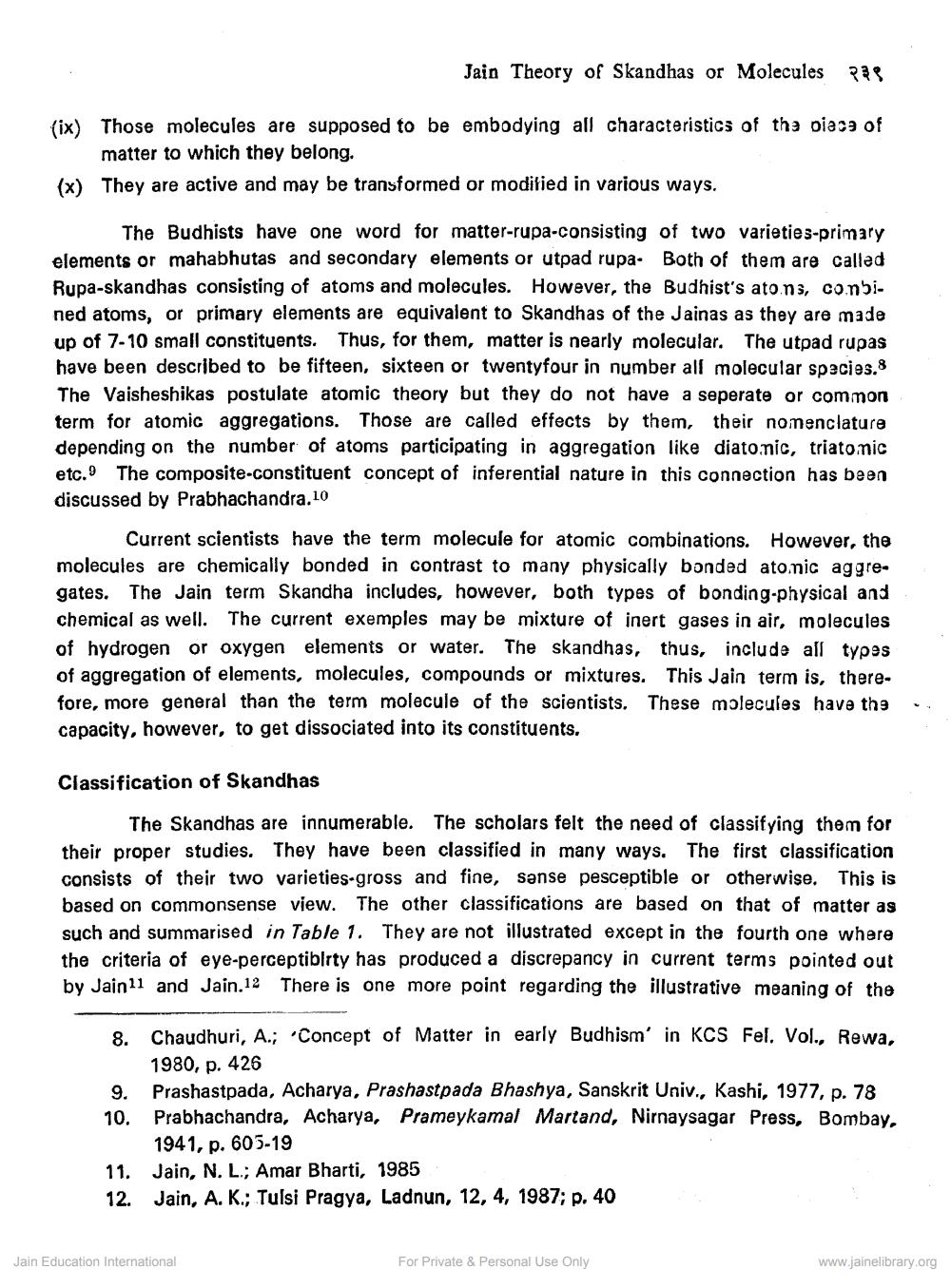________________
Jain Theory of Skandhas or Molecules
pas
(ix) Those molecules are supposed to be embodying all characteristics of the piece of
matter to which they belong. (x) They are active and may be transformed or modified in various ways.
The Budhists have one word for matter-rupa-consisting of two varieties-primary elements or mahabhutas and secondary elements or utpad rupa. Both of them are called Rupa-skandhas consisting of atoms and molecules. However, the Budhist's ato.nz, co.nbined atoms, or primary elements are equivalent to Skandhas of the Jainas as they are made up of 7-10 small constituents. Thus, for them, matter is nearly molecular. The utpad rupas have been described to be fifteen, sixteen or twentyfour in number all molecular species. The Vaisheshikas postulate atomic theory but they do not have a seperate or common term for atomic aggregations. Those are called effects by them, their nomenclature depending on the number of atoms participating in aggregation like diatonic, triatonic etc.9 The composite-constituent concept of inferential nature in this connection has been discussed by Prabhachandra.10
Current scientists have the term molecule for atomic combinations. However, the molecules are chemically bonded in contrast to many physically bonded atonic aggregates. The Jain term Skandha includes, however, both types of bonding-physical and chemical as well. The current exemples may be mixture of inert gases in air, molecules of hydrogen or oxygen elements or water. The skandhas, thus, include all types of aggregation of elements, molecules, compounds or mixtures. This Jain term is, therefore, more general than the term molecule of the scientists. These molecules have the capacity, however, to get dissociated into its constituents.
Classification of Skandhas
The Skandhas are innumerable. The scholars felt the need of classifying them for their proper studies. They have been classified in many ways. The first classification consists of their two varieties-gross and fine, sense pesceptible or otherwise. This is based on commonsense view. The other classifications are based on that of matter as such and summarised in Table 1. They are not illustrated except in the fourth one where the criteria of eye-perceptiblrty has produced a discrepancy in current terms pointed out by Jain 11 and Jain. 12 There is one more point regarding the illustrative meaning of the
8. Chaudhuri, A.; Concept of Matter in early Budhism' in KCS Fel. Vol., Rewa,
1980, p. 426 9. Prashastpada, Acharya, Prashastpada Bhashya, Sanskrit Univ., Kashi, 1977, p. 78 10. Prabhachandra, Acharya, Prameykamal Martand, Nirnaysagar Press, Bombay,
1941, p. 605-19 11. Jain, N. L.; Amar Bharti, 1985 12. Jain, A. K.; Tulsi Pragya, Ladnun, 12, 4, 1987; p. 40
Jain Education International
For Private & Personal Use Only
www.jainelibrary.org




